PANELS
Panel 1 (P1): Maximizing the Impact of Research through Standardization: SDO's plans for the future
Panel 2 (P2): Integrated Sensing and Communication and the Road to Standardization
Panel 3 (P3): Standardisation landscape for 6G robotic services
P1. Maximizing the Impact of Research through Standardization: SDO's plans for the future
Monday 6 November 2023, 10:00-11:30
Room: Wendelstein+Herzogstand
Moderator: Jim Lansford, Farafir, Romania
Panelists:
- Maximilian Riegel, Nokia, Germany
- Thomas Stockhammer, Qualcomm Germany GmbH
- Riccardo Guerzoni, DOCOMO Euro-Labs, Germany
- Mate Boban, Huawei Technologies Duesseldorf GmbH, Germany
Background and Motivation: Standards play a vital role in developing communications technologies; modern wired and wireless communications technologies are developed in Standards Developing Organizations (SDO’s) using contributions from dozens and sometimes hundreds of people. Today’s communication technologies have been built on the foundation of sophisticated techniques such as OFDMA and MIMO, and even more exotic signal processing techniques are in play going forward. A massive amount of research has been applied to address each new generation of technology, and that trend can be expected to continue.
Companies and Universities who want to maximize the impact of their research engage with SDO’s in order to get their research incorporated into the next generation of communication; for companies, leading the pack in research and convincing members of the SDO’s to adopt your proposals means establishing the essential intellectual property that everyone must use to win the race to get products into the market. This Panel of industry-leading experts on standards will discuss the latest standards and research innovations that are driving the “Next Big Thing” in communications technology.
Bios
 Dr. Jim Lansford is the Principal of Farafir, a wireless consultancy based in Timisoara, Romania. He has over 40 years of experience in communications systems, digital signal processing, and strategic business development. His most recent experience was as a Director of Technical Standards at Qualcomm, where he was a leader in standards efforts in V2X, 802.11/Wi-Fi, and UWB. Prior to that, he was Chief Technology Officer of three wireless startups (Momentum Microsystems, Mobilian, and Alereon) and held senior technical positions at Harris and Intel Corporation before joining CSR and Qualcomm. Dr. Lansford is currently chair of the Wireless Next Generation Standing Committee in IEEE 802.11 as well as Chair of the Cellular-V2X Technical Committee in SAE International. Previously, he was co-chair of the IEEE 802.15.3a Task Group (high speed UWB) and he was chair of the Automotive Market Segment Task Group, the DSRC Task Group, and the Long Range Strategy Group in the Wi-Fi Alliance. He also served as Co-chair of the FiRa Consortium Regulatory Working Group. He was the founder of the 802.19 Coexistence Working Group in IEEE as well as holding several leadership positions in the WiMedia Alliance, focused on UWB. In addition to his industrial experience, Dr. Lansford is currently active as an Adjunct Professor in the Computer Science Department at the University of Colorado – Boulder. Dr. Lansford has a Ph.D. in Electrical Engineering from Oklahoma State, an MSEE from Georgia Tech, and a BSEE from Auburn University. He and his wife Lynn live in Timisoara, Romania.
Dr. Jim Lansford is the Principal of Farafir, a wireless consultancy based in Timisoara, Romania. He has over 40 years of experience in communications systems, digital signal processing, and strategic business development. His most recent experience was as a Director of Technical Standards at Qualcomm, where he was a leader in standards efforts in V2X, 802.11/Wi-Fi, and UWB. Prior to that, he was Chief Technology Officer of three wireless startups (Momentum Microsystems, Mobilian, and Alereon) and held senior technical positions at Harris and Intel Corporation before joining CSR and Qualcomm. Dr. Lansford is currently chair of the Wireless Next Generation Standing Committee in IEEE 802.11 as well as Chair of the Cellular-V2X Technical Committee in SAE International. Previously, he was co-chair of the IEEE 802.15.3a Task Group (high speed UWB) and he was chair of the Automotive Market Segment Task Group, the DSRC Task Group, and the Long Range Strategy Group in the Wi-Fi Alliance. He also served as Co-chair of the FiRa Consortium Regulatory Working Group. He was the founder of the 802.19 Coexistence Working Group in IEEE as well as holding several leadership positions in the WiMedia Alliance, focused on UWB. In addition to his industrial experience, Dr. Lansford is currently active as an Adjunct Professor in the Computer Science Department at the University of Colorado – Boulder. Dr. Lansford has a Ph.D. in Electrical Engineering from Oklahoma State, an MSEE from Georgia Tech, and a BSEE from Auburn University. He and his wife Lynn live in Timisoara, Romania.
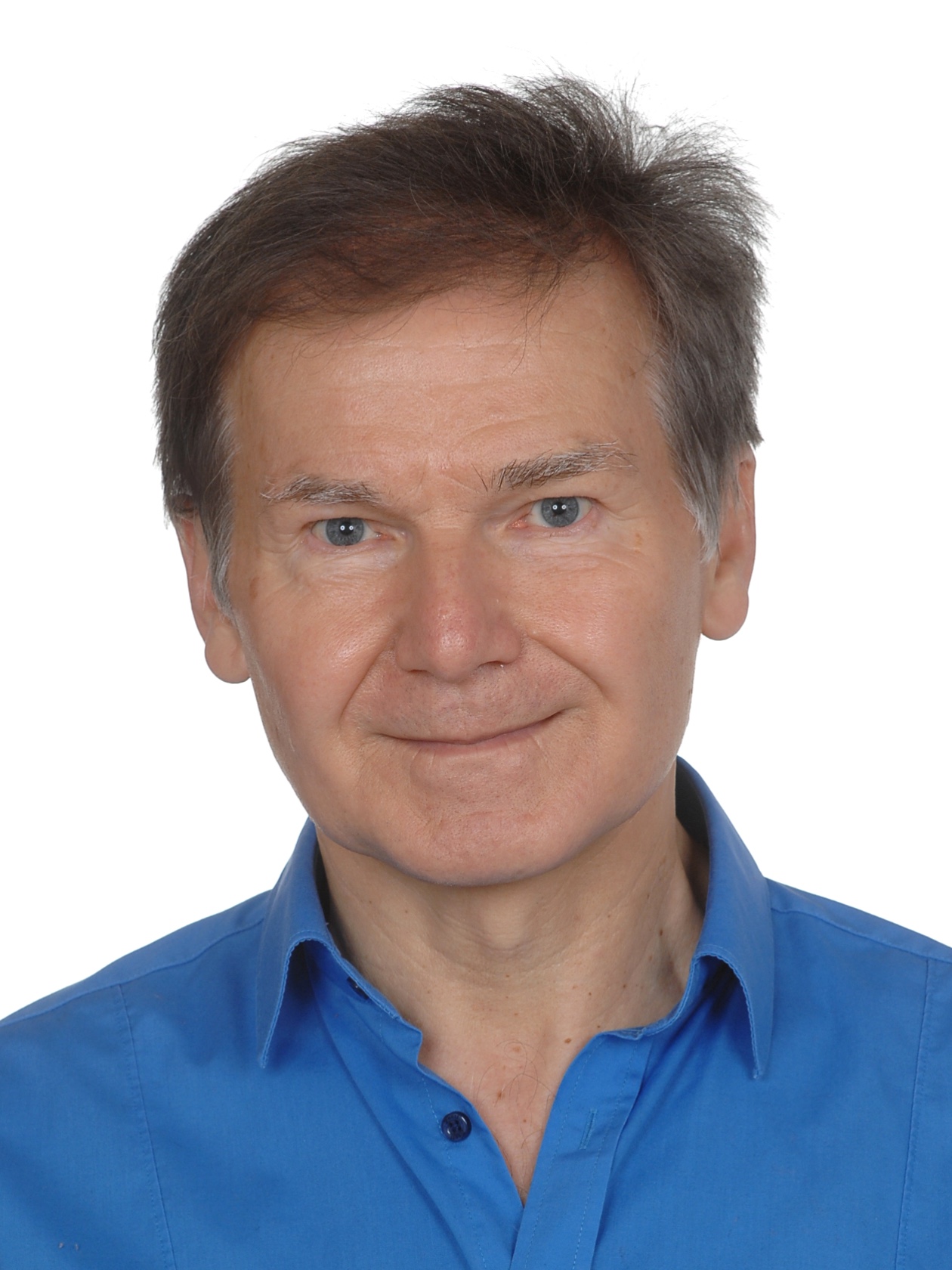 Dr. Maximilian Riegel received his Dipl.-Ing. degree in Electrical Engineering from TU Munich, Germany and is currently responsible for IEEE & Wi-Fi standardization within Nokia. He has nearly 40 years experience in advanced standardization, participates in IEEE 802 standardization since 2000, led the development of IEEE 802.1CF-2019 as chair of the IEEE 802.1 OmniRAN TG, and is currently voting member of IEEE 802.11 and IEEE 802.1. In 2009-2016, he was engaged in Cognitive Radio related standardization activities in ITU-R, ETSI RRS, IEEE802, IEEE1900, CEPT and other regulatory bodies. In 2004...2010, he was vice chair of the Networking Working Group in the WiMAX Forum and led the Ethernet over cellular work in IETF 16ng WG. He regularly acts as lecturer for Wi-Fi and as speaker on technical conferences. Formerly, he held R&D management positions within Siemens Communications and Philips Communication Industry, where he was engaged in the development of the ITU H.261 video coding standard.
Dr. Maximilian Riegel received his Dipl.-Ing. degree in Electrical Engineering from TU Munich, Germany and is currently responsible for IEEE & Wi-Fi standardization within Nokia. He has nearly 40 years experience in advanced standardization, participates in IEEE 802 standardization since 2000, led the development of IEEE 802.1CF-2019 as chair of the IEEE 802.1 OmniRAN TG, and is currently voting member of IEEE 802.11 and IEEE 802.1. In 2009-2016, he was engaged in Cognitive Radio related standardization activities in ITU-R, ETSI RRS, IEEE802, IEEE1900, CEPT and other regulatory bodies. In 2004...2010, he was vice chair of the Networking Working Group in the WiMAX Forum and led the Ethernet over cellular work in IETF 16ng WG. He regularly acts as lecturer for Wi-Fi and as speaker on technical conferences. Formerly, he held R&D management positions within Siemens Communications and Philips Communication Industry, where he was engaged in the development of the ITU H.261 video coding standard.
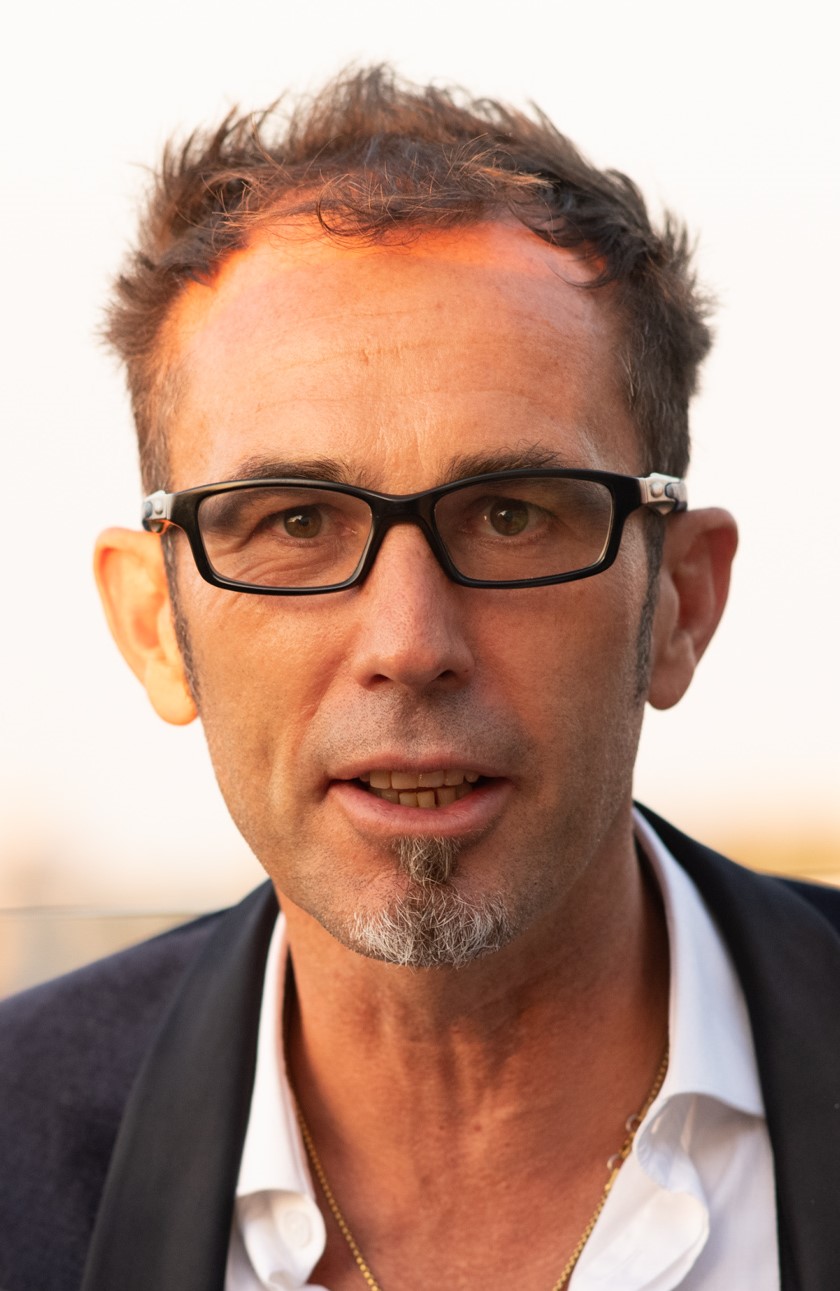 Dr. Thomas Stockhammer joined Qualcomm in 2014 and now acts as Senior Director Technical Standards. In his different roles, he coauthored more than 200 research publications, more than 200 patents and 1000s of standards contributions. He is the active and has board, leadership and rapporteur positions in 3GPP, DVB, MPEG, IETF, ATSC, CTA, ETSI, Metaverse Standards Forum and the DASH-Industry Forum in multimedia communication, TV-distribution, 5G broadcast, content delivery protocols, immersive media representation, adaptive streaming, XR and the Metaverse. Among others, he leads MPEG-I Scene Description efforts, DASH-IF Technical working group, 3GPP Video and XR activities as well as DVB-5G activities. He received several awards for work on DASH, media delivery and 5G Broadcast, namely the INCITS Technical Excellence Award 2013, the 3GPP Excellence award 2017, the CTA Technology & Standards Achievement Award 2019 and 2023 as well as an Emmy Inventor Award for in 2022. He is regular speaker and Program Committee Member at events such as IBC, DVB World, Mile High Video, MWS or BroadThinking. In January 2023, he was elevated to IEEE Fellow for his contributions to media delivery and video streaming standards.
Dr. Thomas Stockhammer joined Qualcomm in 2014 and now acts as Senior Director Technical Standards. In his different roles, he coauthored more than 200 research publications, more than 200 patents and 1000s of standards contributions. He is the active and has board, leadership and rapporteur positions in 3GPP, DVB, MPEG, IETF, ATSC, CTA, ETSI, Metaverse Standards Forum and the DASH-Industry Forum in multimedia communication, TV-distribution, 5G broadcast, content delivery protocols, immersive media representation, adaptive streaming, XR and the Metaverse. Among others, he leads MPEG-I Scene Description efforts, DASH-IF Technical working group, 3GPP Video and XR activities as well as DVB-5G activities. He received several awards for work on DASH, media delivery and 5G Broadcast, namely the INCITS Technical Excellence Award 2013, the 3GPP Excellence award 2017, the CTA Technology & Standards Achievement Award 2019 and 2023 as well as an Emmy Inventor Award for in 2022. He is regular speaker and Program Committee Member at events such as IBC, DVB World, Mile High Video, MWS or BroadThinking. In January 2023, he was elevated to IEEE Fellow for his contributions to media delivery and video streaming standards.
 Riccardo Guerzoni is Director of the Core Network Group at DOCOMO Euro-Labs, Munich, Germany. Riccardo contributed to standardizing the 5G core network in 3GPP since Release 15, with special focus on Edge Computing and Industrial IoT. At DOCOMO Euro-Labs, Riccardo coordinates a research team that contributes to standardization in 3GPP, ETSI and O-RAN Alliance. Since 2020 to 2022, he served as board member of the 5G Alliance for Connected Industries and Automation (5G-ACIA). He is currently active in 6G pre-standardization research initiatives, including one6G Association, where he is member of the board.
Riccardo Guerzoni is Director of the Core Network Group at DOCOMO Euro-Labs, Munich, Germany. Riccardo contributed to standardizing the 5G core network in 3GPP since Release 15, with special focus on Edge Computing and Industrial IoT. At DOCOMO Euro-Labs, Riccardo coordinates a research team that contributes to standardization in 3GPP, ETSI and O-RAN Alliance. Since 2020 to 2022, he served as board member of the 5G Alliance for Connected Industries and Automation (5G-ACIA). He is currently active in 6G pre-standardization research initiatives, including one6G Association, where he is member of the board.
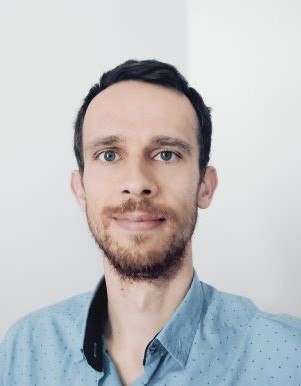 Dr. Mate Boban received the Diploma degree in informatics from the University of Zagreb and the Ph.D. degree in electrical and computer engineering from Carnegie Mellon University, in 2004 and 2012, respectively. He is a technical expert with Huawei Munich Research Center, Germany. He is a co-chair of COST INTERACT WG1 (Radio Channels) and a vice-chair of ETSI Industry Specification Group (ISG) on THz. He has co-chaired several IEEE conferences and workshops and has been actively involved in several EU-funded projects. He coauthored three papers that received the Best Paper Award, at IEEE VTC, IEEE VNC, and at EuCAP. His current research interests are in THz communications and sensing systems, channel modeling, resource allocation, and machine learning in wireless networks.
Dr. Mate Boban received the Diploma degree in informatics from the University of Zagreb and the Ph.D. degree in electrical and computer engineering from Carnegie Mellon University, in 2004 and 2012, respectively. He is a technical expert with Huawei Munich Research Center, Germany. He is a co-chair of COST INTERACT WG1 (Radio Channels) and a vice-chair of ETSI Industry Specification Group (ISG) on THz. He has co-chaired several IEEE conferences and workshops and has been actively involved in several EU-funded projects. He coauthored three papers that received the Best Paper Award, at IEEE VTC, IEEE VNC, and at EuCAP. His current research interests are in THz communications and sensing systems, channel modeling, resource allocation, and machine learning in wireless networks.
P2. Integrated Sensing and Communication and the Road to Standardization
Tuesday 7 November 2023, 10:00-11:30
Room: Wendelstein+Herzogstand
Moderator: Richard Stirling-Gallacher, Huawei Technologies Dusseldorf GmbH, Germany
Panelists:
- Andrea Giorgetti, CNIT and University of Bologna, Italy
- Andreas Muller, Bosch, Germany
- Meik Kottkamp, Rohde & Schwarz, Germany
- Mario H. Castañeda Garcia , Huawei, Germany
Background and Motivation: As research for 6G fully accelerates, extensive world-wide research for Integrated Sensing and Communications (ISAC) is being conducted. This is also driven by various global initiatives, European and national funded research projects and other academic/industrial research programs.
Parallel to the research, at 3GPP standardization for 5G NR, the Service and System Aspects working group 1 (SA1) has an ongoing Study Item on use cases and requirements for future enhancement of the 5G NR system, to support sensing services for various applications. Currently 3GPP discussion are ongoing as to which 5G NR ISAC related topics will be handled in the next 5G NR 3GPP releases. Although it is expected that 5G NR will support some ISAC services, within the constraints of the current 5G NR system, current research is focussing on how the future 6G system will be able to support ISAC in a fully native and integrated system, supporting more demanding user cases, improved KPIs ad more efficient operation.
The motivation of this Panel is to put together leading research experts on ISAC and also representative from industry, to discuss the latest ISAC research developments and how these map to future use cases and relevant standardization efforts at 3GPP for 5G and 6G.
Bios
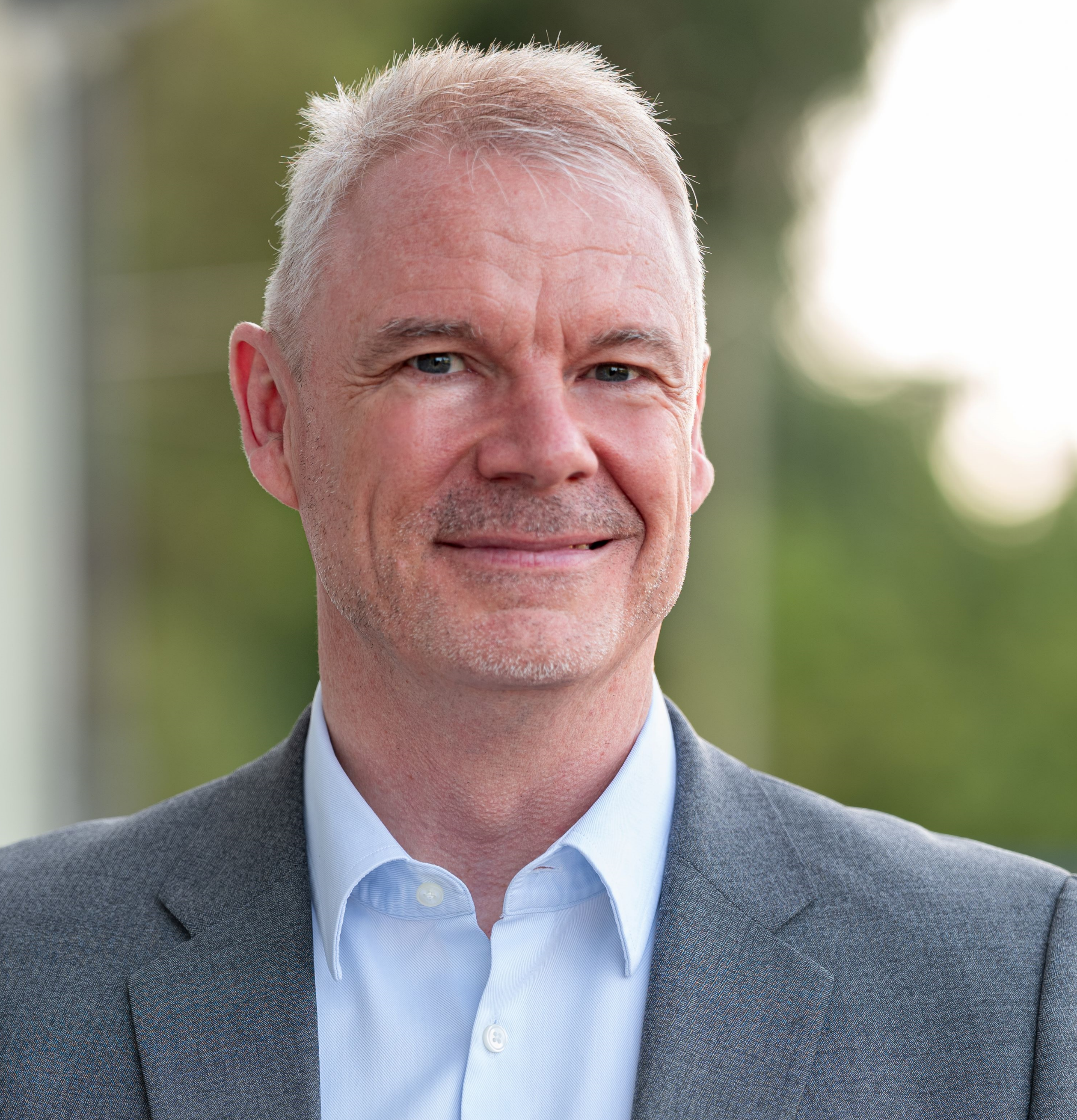 Dr. Richard Stirling-Gallaher is Research Expert / Team Leader at Munich Research Center, Huawei Technologies Duesseldorf GmbH where he leads a team focusing on innovative 6G ISAC and beyond 5G positioning techniques. Prior to this he held positions at Huawei Technologies and Samsung Research America in USA, were he led pre-standardization research on 5G NR mmWave and massive MIMO. He has also held previous positions in Germany, leading 3G, 4G and mm wave communications/ sensing research. He received his M.Eng. degree in Electronic Engineering from The University of Southampton, and the Ph.D. degree from The University of Edinburgh. He currently holds more than 125 granted U.S. patents.
Dr. Richard Stirling-Gallaher is Research Expert / Team Leader at Munich Research Center, Huawei Technologies Duesseldorf GmbH where he leads a team focusing on innovative 6G ISAC and beyond 5G positioning techniques. Prior to this he held positions at Huawei Technologies and Samsung Research America in USA, were he led pre-standardization research on 5G NR mmWave and massive MIMO. He has also held previous positions in Germany, leading 3G, 4G and mm wave communications/ sensing research. He received his M.Eng. degree in Electronic Engineering from The University of Southampton, and the Ph.D. degree from The University of Edinburgh. He currently holds more than 125 granted U.S. patents.
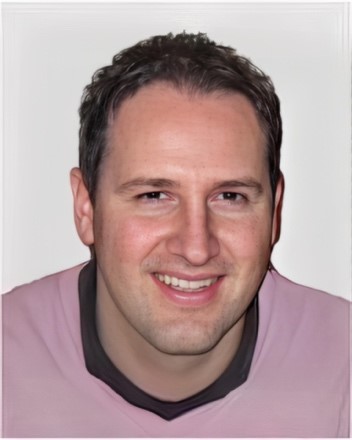 Dr. Andrea Giorgetti received the Dr.-Ing. degree (summa cum laude) in electronic engineering and the Ph.D. degree in electronic engineering and computer science from the University of Bologna, Italy, in 1999 and 2003, respectively. From 2003 to 2005, he was a Researcher with the National Research Council, Italy. He is an Associate Professor at the Department of Electrical, Electronic, and Information Engineering “Guglielmo Marconi,” University of Bologna. In Spring 2006, he was with the Laboratory for Information and Decision Systems, Massachusetts Institute of Technology (MIT), Cambridge, MA, USA. He has co-authored the book Cognitive Radio Techniques: Spectrum Sensing, Interference Mitigation, and Localization (Artech House, 2012). He was the Technical Program Committee Co-Chair of several symposia at the IEEE International Conference on Communication and IEEE Global Communication Conference. From 2017 to 2018, he was the Elected Chair of the IEEE Communications Society’s Radio Communications Technical Committee. He is a past Editor of the IEEE Communications Letters and the IEEE Transactions on Wireless Communications.
Dr. Andrea Giorgetti received the Dr.-Ing. degree (summa cum laude) in electronic engineering and the Ph.D. degree in electronic engineering and computer science from the University of Bologna, Italy, in 1999 and 2003, respectively. From 2003 to 2005, he was a Researcher with the National Research Council, Italy. He is an Associate Professor at the Department of Electrical, Electronic, and Information Engineering “Guglielmo Marconi,” University of Bologna. In Spring 2006, he was with the Laboratory for Information and Decision Systems, Massachusetts Institute of Technology (MIT), Cambridge, MA, USA. He has co-authored the book Cognitive Radio Techniques: Spectrum Sensing, Interference Mitigation, and Localization (Artech House, 2012). He was the Technical Program Committee Co-Chair of several symposia at the IEEE International Conference on Communication and IEEE Global Communication Conference. From 2017 to 2018, he was the Elected Chair of the IEEE Communications Society’s Radio Communications Technical Committee. He is a past Editor of the IEEE Communications Letters and the IEEE Transactions on Wireless Communications.
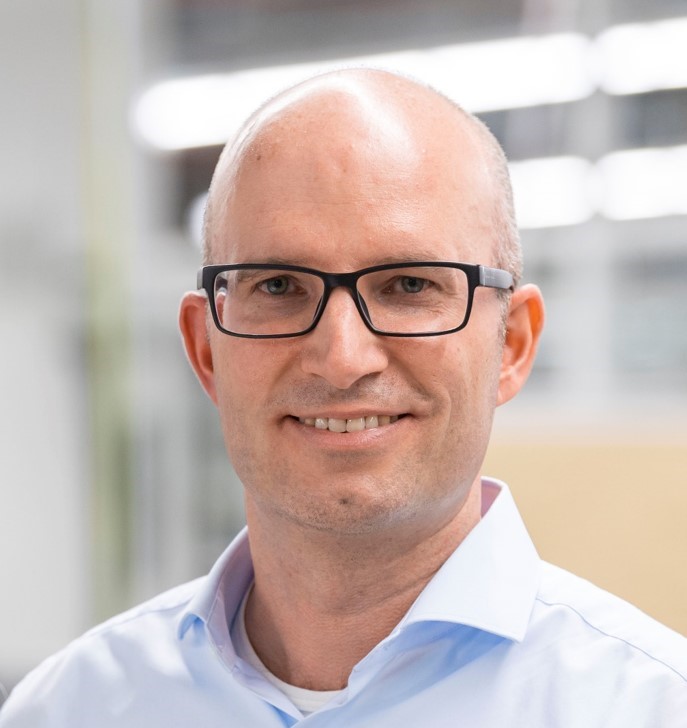 Dr. Andreas Mueller is a renowned expert at the forefront of connectivity research and 5G/6G innovation. As the leader of Bosch's strategic 6G activities across diverse business units and sites, he spearheads holistic transformative endeavors aligned with business imperatives. With his profound expertise in communication technologies for the IoT, Andreas also serves as the Chief Expert in this field. Moreover, he has held the position of General Chair of 5G-ACIA, the globally leading organization driving and shaping Industrial 5G, since its establishment in 2018. Andreas’ pivotal contributions also include coordinating and advancing Bosch's Industrial 5G undertakings over the last couple of years, focusing on key areas such as private networks, Open RAN, AI/ML, and edge computing. Equipped with a robust background in telecommunications and vertical industry applications, Andreas is uniquely positioned to drive the transformative 5G/6G-enabled revolution across various sectors.
Dr. Andreas Mueller is a renowned expert at the forefront of connectivity research and 5G/6G innovation. As the leader of Bosch's strategic 6G activities across diverse business units and sites, he spearheads holistic transformative endeavors aligned with business imperatives. With his profound expertise in communication technologies for the IoT, Andreas also serves as the Chief Expert in this field. Moreover, he has held the position of General Chair of 5G-ACIA, the globally leading organization driving and shaping Industrial 5G, since its establishment in 2018. Andreas’ pivotal contributions also include coordinating and advancing Bosch's Industrial 5G undertakings over the last couple of years, focusing on key areas such as private networks, Open RAN, AI/ML, and edge computing. Equipped with a robust background in telecommunications and vertical industry applications, Andreas is uniquely positioned to drive the transformative 5G/6G-enabled revolution across various sectors.
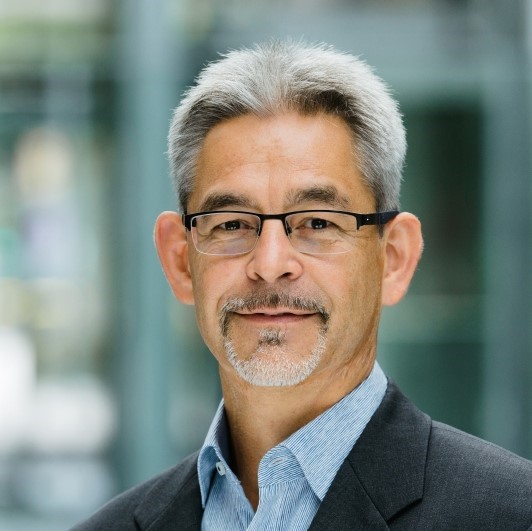 Meik Kottkamp has more than 25 years of technology experience in the cellular industry. He is Principal Technology Manager Wireless for Rohde & Schwarz in Munich and is responsible for strategic marketing and product portfolio development covering existing and new 3GPP technologies. His focus is 5G NR, specifically for industrial applications, and 6G research. Meik joined Rohde & Schwarz in August 2007 after working for 11 years for Siemens and NSN. He holds a Dipl.-Ing. degree of electrical and microwave engineering from the Leibniz University Hannover, Germany.
Meik Kottkamp has more than 25 years of technology experience in the cellular industry. He is Principal Technology Manager Wireless for Rohde & Schwarz in Munich and is responsible for strategic marketing and product portfolio development covering existing and new 3GPP technologies. His focus is 5G NR, specifically for industrial applications, and 6G research. Meik joined Rohde & Schwarz in August 2007 after working for 11 years for Siemens and NSN. He holds a Dipl.-Ing. degree of electrical and microwave engineering from the Leibniz University Hannover, Germany.
Dr. Mario H. Castañeda Garcia received the B.Sc. degree in electrical engineering from the Universidad Nacional Autónoma de Honduras, Tegucigalpa, Honduras, in 2001, and the M.Sc. degree in communications engineering and the Dr.-Ing. degree from the Technische Universität München (TUM), Munich, Germany, in 2004 and 2014, respectively. He is a senior research engineer at the Munich Research Center, Huawei Technologies Düsseldorf GmbH. He has contributed to several EU funded research projects and has been actively involved in 5G NR research and 3GPP standardization activities in the areas of V2X communication and sidelink positioning. His current research interests include ISAC, sidelink communication and positioning, as well as AI-based positioning. He was the recipient of the Best Overall Paper Award at IEEE VTC Fall 2018 and the VDE award for his doctoral thesis in 2014.
P3. Standardisation landscape for 6G robotic services
Wednesday 8 November 2023, 10:00-11:30
Room: Wendelstein+Herzogstand
Moderator: Mohammad Shikh Bahaei, King's College London, UK/WG1 chair
Panelists:
- Mona Ghassemian, Huawei Technologies,UK
- Dejan Vukobratovic, University of Novi Sad, Serbia
- Albena Mihovska, Research& Development & Innovation Consortium (RDIC), Bulgaria
- Kamran Sayrafian, National Institute of Standards and Technology (NIST), USA
- Cristina Ciochina, Mitsubishi Electric R&D Centre Europe (MERCE), France
Background and Motivation: Standards play a key role in the success of the telecommunications industry and other verticals such as robotics, as enablers of global systems inter-operability and economies of scale. With advancements and integration of capabilities to address the requirements of multidisciplinary topics such as connected robotics, there is a gap for joint research and standardisation as SDOs are mainly either focused on communication side or robotics and automation systems (RAS) side. Recent activities show the trend in standardisations, namely the 3GPP Service and System Aspects working group 1 (SA1) has Service Robots (SOBOTs) and Metaverse features include robotic use cases and requirements in Release-19.
This panel will explore standard initiatives, professional organisation and industrial fora and alliances that are primary coordinate their efforts on specific subjects of communication and robotics. ICT examples are 3GPP, IETF, IEEE, ETSI, M2M, and Robotics examples are ISO/TC, IEC, A3, ria, ANSI, VDMA, IFR, ADRA, eu-robotics.
This panel includes discussions related to integrating mobile communication capability into robotics systems had gained significant momentum and how this integration can give rise to new possibilities to address relevant industrial and societal challenges. The panel further discusses where the current communication systems fall short to satisfy these requirements and what needs to be overcome in 6G for future robotic and automation systems.
Discussion topics include:
- Requirements: what are the human and robot interaction and communication requirements and how to measure them?
- Can robotic technologies can improve the performance of 6G networks and vice versa?
- Enabling technologies: what are the main elements that may allow us to achieve the stringent requirements?
- Architecture impacts: what are the 6G architecture impacts to feature full integration of sensing, computation and control in communication networks?
- Standards: route for 6G research outputs for standardisation and challenges, cross SDOs collaboration for harmonised and interoperable standards.
This Panel is endorsed by one6G Association (https://one6g.org)
Bios
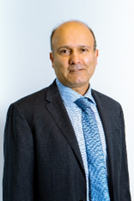 Prof. Mohammad Reza Shikh-Bahaei has been engaged in research in the area of wireless communications for 27 years both in academic and industrial organizations. He has worked for start-up companies on statistical signal processing for interference cancellation, network planning and optimisation of wireless networks. In 2000 he joined National Semiconductor Corp. (NSC), CA, USA, (now part of Texas Instruments) and worked within a team on the design of 3rd generation handsets based on UMTS standards, for which he has been awarded three US patents as inventor and co-inventor, respectively. He returned to the UK in March 2002 as a Lecturer at King’s College London, and is now a full Professor of Telecommunications in the Department of Engineering, King's College London. He has since worked and published numerous articles on a number of research topics including resource allocation for optimization of cellular (inc. HSPA, 4G, 5G) and short range sensor/ad-hoc networks (inc. Wifi, Bluetooth, Zigbee), Cognitive and full duplex radios/networking, cross-layer optimisation of wireless sensor networks and the Internet of Things (IoT), Healthcare applications of signal processing and wireless communications, short range device-to-device (D2D) communication and edge caching, MIMO and machine-type multimedia communication, communication protocols for Vehicle to Everything and drone Communications. His research is now on new use cases and technologies for 6G networks.
Prof. Mohammad Reza Shikh-Bahaei has been engaged in research in the area of wireless communications for 27 years both in academic and industrial organizations. He has worked for start-up companies on statistical signal processing for interference cancellation, network planning and optimisation of wireless networks. In 2000 he joined National Semiconductor Corp. (NSC), CA, USA, (now part of Texas Instruments) and worked within a team on the design of 3rd generation handsets based on UMTS standards, for which he has been awarded three US patents as inventor and co-inventor, respectively. He returned to the UK in March 2002 as a Lecturer at King’s College London, and is now a full Professor of Telecommunications in the Department of Engineering, King's College London. He has since worked and published numerous articles on a number of research topics including resource allocation for optimization of cellular (inc. HSPA, 4G, 5G) and short range sensor/ad-hoc networks (inc. Wifi, Bluetooth, Zigbee), Cognitive and full duplex radios/networking, cross-layer optimisation of wireless sensor networks and the Internet of Things (IoT), Healthcare applications of signal processing and wireless communications, short range device-to-device (D2D) communication and edge caching, MIMO and machine-type multimedia communication, communication protocols for Vehicle to Everything and drone Communications. His research is now on new use cases and technologies for 6G networks.
 Dr. Mona Ghassemian has over 20 years of experience in the wireless and telecom research in industry and academia. She currently works as 6G principal expert on industry vertical, working on strategic R&D roadmap of key technologies relevant for next generation mobile communication system design at Huawei Advanced wireless Technology Lab. Prior to her current role, in her senior manager position at InterDigital Inc, she led a research team on the next generation networking. She worked as a principal research scientist at British Telecom Research and Technology with a focus on future networks and security. Prior to her industry roles, she worked as a lecturer and senior lecturer at KCL, Greenwich and SBU supervising over a 100 postdocs, PhD and MSc researchers. She has published over 70 papers, 13 patents, 2 book chapters and several contributions to 3GPP, IEEE and IETF standard organisations. She is a member of IEEE SA 1918.1 Tactile Internet WG, the IEEE UK & Ireland section past-chair and IEEE Region 8 standardisation sub-committee.
Dr. Mona Ghassemian has over 20 years of experience in the wireless and telecom research in industry and academia. She currently works as 6G principal expert on industry vertical, working on strategic R&D roadmap of key technologies relevant for next generation mobile communication system design at Huawei Advanced wireless Technology Lab. Prior to her current role, in her senior manager position at InterDigital Inc, she led a research team on the next generation networking. She worked as a principal research scientist at British Telecom Research and Technology with a focus on future networks and security. Prior to her industry roles, she worked as a lecturer and senior lecturer at KCL, Greenwich and SBU supervising over a 100 postdocs, PhD and MSc researchers. She has published over 70 papers, 13 patents, 2 book chapters and several contributions to 3GPP, IEEE and IETF standard organisations. She is a member of IEEE SA 1918.1 Tactile Internet WG, the IEEE UK & Ireland section past-chair and IEEE Region 8 standardisation sub-committee.
 Prof. Dejan Vukobratovic received PhD degree in electrical engineering from the University of Novi Sad, Serbia in 2008. During 2009-2010, he was a Marie Curie Intra-European Fellow at the Department of Electronic and Electrical Engineering, University of Strathclyde, Glasgow, UK. Since April 2019, he is a Full Professor with the Department of Power, Electronics and Communication Engineering, University of Novi Sad, where he is now head of Communications and Signal Processing group. His research interests are in communication theory, mobile cellular networks, massive IoT and large-scale distributed information processing. He has published about 150 journal and conference papers mainly in the flagship IEEE journals and conferences. He was co-recepient of best paper awards at IEEE MMSP 2010 and IEEE SmartGridComm 2017. He was TPC chair of IEEE VTC Spring 2020 and IEEE SmartGridComm 2022 conference, and Symposium Chair at IEEE SmartGridComm 2021 and IEEE ICC 2023 conference. His research team participated in a large number of H2020 and Horizon Europe projects.
Prof. Dejan Vukobratovic received PhD degree in electrical engineering from the University of Novi Sad, Serbia in 2008. During 2009-2010, he was a Marie Curie Intra-European Fellow at the Department of Electronic and Electrical Engineering, University of Strathclyde, Glasgow, UK. Since April 2019, he is a Full Professor with the Department of Power, Electronics and Communication Engineering, University of Novi Sad, where he is now head of Communications and Signal Processing group. His research interests are in communication theory, mobile cellular networks, massive IoT and large-scale distributed information processing. He has published about 150 journal and conference papers mainly in the flagship IEEE journals and conferences. He was co-recepient of best paper awards at IEEE MMSP 2010 and IEEE SmartGridComm 2017. He was TPC chair of IEEE VTC Spring 2020 and IEEE SmartGridComm 2022 conference, and Symposium Chair at IEEE SmartGridComm 2021 and IEEE ICC 2023 conference. His research team participated in a large number of H2020 and Horizon Europe projects.

Prof. Albena Mihovska has a PhD degree in EEng (2008) from Aalborg University, Aalborg, Denmark. She has a strong academic research track record as an Associate Professor at Aalborg University (2008-2017) and Aarhus University (2017-2023), Denmark. She is a Senior Research Expert at the Research&Innovation&Development Consortium (RDIC), Sofia, Bulgaria. Further, she holds positions as a CTO, SmartAvatar BV, The Netherlands and as a 6G Research Director at CTIF Global Capsule (CGC) Foundation, Skagen, Denmark. She is a WG3 Vice-Chair of One6G and a Board Member of EUROMERSIVE. Her research interests are in 6G connectivity for applications across vertical market segments. She is an ITU-T Focus Group on Metaverse (FGMV) Expert, and has been active within ITU-T standardisation since 2011. She serves on the Committees of several prominent IEEE events.
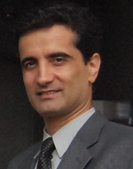
Dr. Kamran Sayrafian holds a Ph.D. degree in Electrical & Computer Engineering from the University of Maryland, USA. He is currently a Senior Scientist at the Information Technology Laboratory of the National Institute of Standards and Technology in U.S. where he leads a strategic program related to the application of the Internet-of-Things in healthcare. He is also an affiliate Associate Prof. of the Concordia University in Montreal, Canada since 2016 and the co-chair of the Vertical Track on Health and Well-Being at the COST CA20120. Dr. Sayrafian has served as the Technical Program Committee and Executive Co-Chair of the IEEE PIMRC 2014 and organizer of several IEEE Communication Society Conferences and international workshops focused on the applications of wireless communication in healthcare. He was also a member of the Editorial Board of the IEEE Wireless Communication Magazine from 2016 to 2020. He has published over 140 conference/journal papers, and book chapters; and, has been the recipient of the IEEE PIMRC 2009, SENSORCOMM 2011, IEEE CSCN 2018 and IEEE EuCNC 2019 best paper awards. Dr. Sayrafian was a major contributor to the development of the IEEE802.15.6 international standard on Body Area Networks; and the recipient of the 2015 U.S. Department of Commerce Bronze Medal for his contribution to this emerging field. In 2014, he also served as the U.S. Embassy Science Fellow in Croatia. Dr. Sayrafian is the co-inventor/inventor of five U.S. patents and a Fellow of the Washington Academy of Sciences.
.
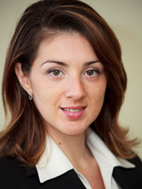
Dr. Cristina Ciochina holds a Ph.D. degree from Université Paris-Saclay (2009) and a M.Sc. degree from Ecole CentraleSupélec, Paris (2005), both in telecommunications. Currently Senior Research Staff with Mitsubishi Electric R&D Centre Europe (MERCE), France, she has more than 15 years of experience in different standardization bodies such as 3GPP, ETSI and DVB, where she was actively involved in designing several generations of wireless communications technologies for satellite, automotive and industrial communication systems. Besides her active participation in 3GPP/NR standardization, she currently serves as rapporteur in the ETSI Industry Specification Group (ISG) on THz, leading the work item on use cases for TeraHertz communications. She published 25+ international peer review papers, 150+ technical contributions to different standardization bodies, and is author or co-author of more than 45 patents.






